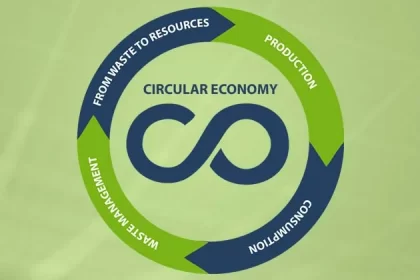Inflation touches every part of the global economy, and supply chains are no exception. Rising costs ripple through production, transportation, and distribution networks in ways that businesses can’t always predict—or easily adapt to.
From higher energy prices impacting logistics to material shortages straining manufacturers, inflation reshapes how goods move from suppliers to consumers. It forces industries to rethink long-standing practices and adopt new strategies for survival.
Read on as we explore the major ways inflation is reshaping global supply chains today.
1. Rising Energy Costs Are Affecting Supply Chain Stability
In recent years, energy costs have become a significant factor that’s continuing to reshape supply chains, raising expenses for production, shipping, and storage. Inflation is intensifying these issues by driving up the already volatile energy market.
Several events since 2020 have contributed to this trend. The Covid-19 pandemic disrupted demand patterns and energy supply networks, causing prices to climb. And before markets could stabilize, global tensions like the Russia–Ukraine war created further shocks to energy availability and affordability worldwide.
These prolonged increases affect every stage of supply chains. Fuel for transportation becomes pricier, making it harder for companies to ship goods efficiently. Operating factories or warehouses becomes more expensive too.
Together, these challenges force businesses into difficult decisions that ripple through entire industries—and eventually reach consumers as: higher prices.
2. Inflation Is Pressuring Natural Resource Supply Chains
Inflation is creating unique challenges for industries that rely on natural resources. Rising costs for transportation, labor, and equipment make operations more expensive, leaving businesses with narrower profit margins.
For example, three major diamond mines in Canada’s Northwest Territories are facing mounting difficulties. In 2024, these mines reported losses, sparking concerns over their long-term viability.
Inflation-related supply chain disruptions are compounding issues like low global diamond prices and potential tariffs.
However, the government plans to increase the number of local diamond valuators, helping miners expedite getting their products to market. This government bailout will hopefully ease the NWT diamond mines closure risk.
Such challenges are not isolated to diamonds. Many resource-dependent sectors worldwide must navigate increased costs alongside fluctuating market demand.
The combination can jeopardize entire supply chains when inflation pressures build faster than businesses can adapt or recover profits. This highlights the critical need for resilience in natural resource industries today.
3. Increased Material Prices Are Straining the Supply Chains of the Manufacturing Sector
Manufacturers face growing challenges as inflation drives up the cost of raw materials. Essential components, from metals to plastics, have become more expensive, increasing production costs and shrinking profit margins.
Several factors contribute to this trend. Supply chain disruptions over recent years have created bottlenecks for critical materials. Rising energy costs also impact extraction and processing industries, adding another layer of expense that trickles down to manufacturers.
For businesses in sectors like automotive or construction—where material use is intensive—this strain can lead to difficult choices. Companies may need to scale back output or increase prices on finished goods just to remain operational.
These pressures illustrate how inflation complicates manufacturing processes worldwide by making basic inputs less accessible and far more costly than before.
4. There’s a Shift Towards Nearshoring Due to Inflationary Pressures
Inflation has pushed many businesses to reconsider the structure of their supply chains. Long-distance trade, often dependent on low costs, becomes less viable when transportation expenses and tariffs rise sharply.
Nearshoring—sourcing or producing goods closer to home—is increasingly viewed as a solution.
Shorter supply lines help reduce exposure to volatile fuel prices and fluctuating currency rates. By moving operations nearer, companies also gain greater control over logistics while avoiding extended shipping delays.
The shift became more pronounced following disruptions like those seen during the Covid-19 pandemic.
With inflation adding pressure through higher global trade costs, nearshoring offers an opportunity for businesses to create more resilient and cost-effective supply networks in regions where risks can be minimized or managed effectively.
The Bottom Line
As we have seen, inflation continues to challenge the stability of global supply chains, pushing businesses to adapt in ways that reshape entire industries.
As costs climb and pressures mount, resilience and innovation are becoming critical tools for survival.
Addressing these shifts head-on offers opportunities not just to overcome challenges, but also to build stronger, more efficient systems for the future.










